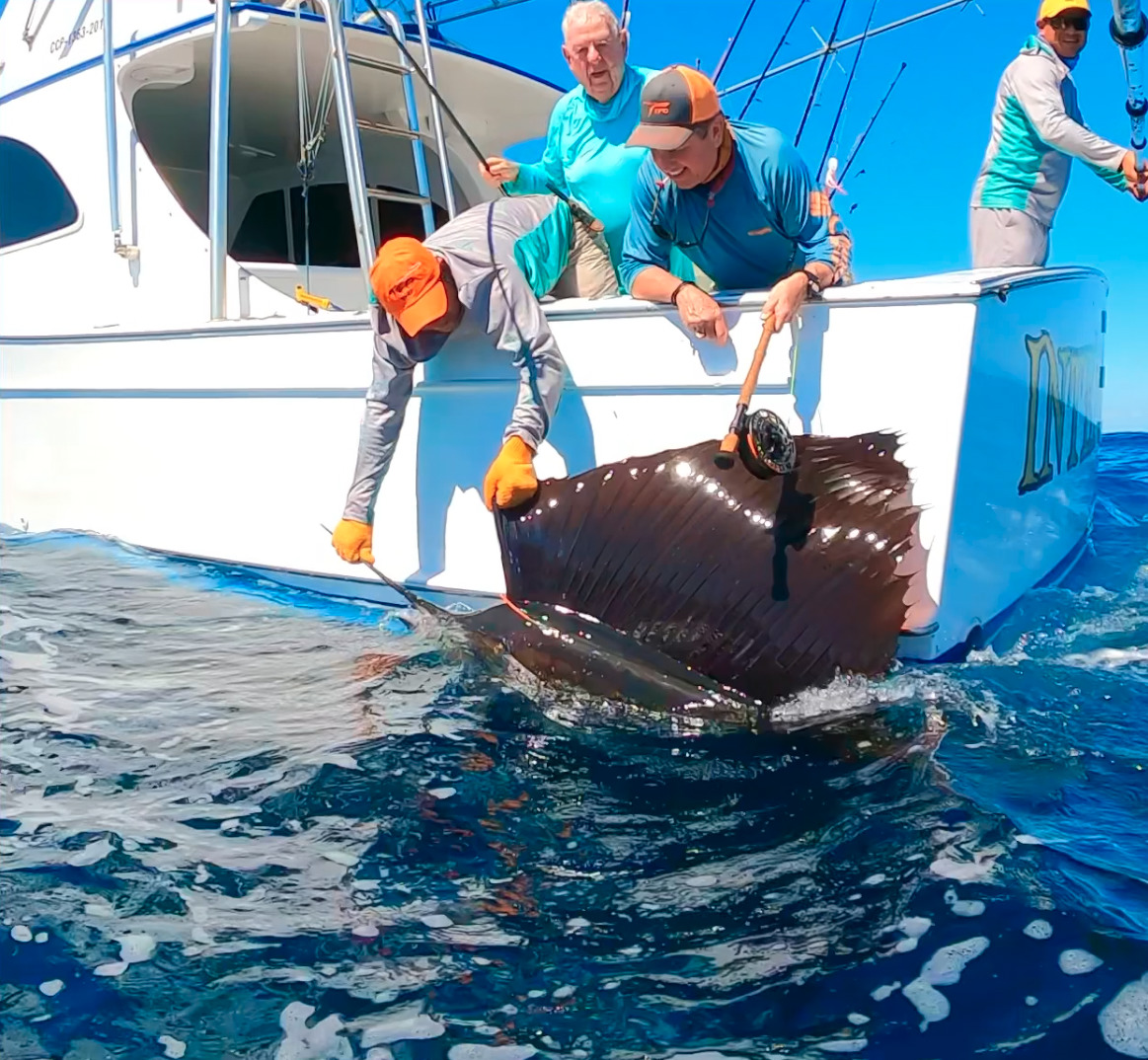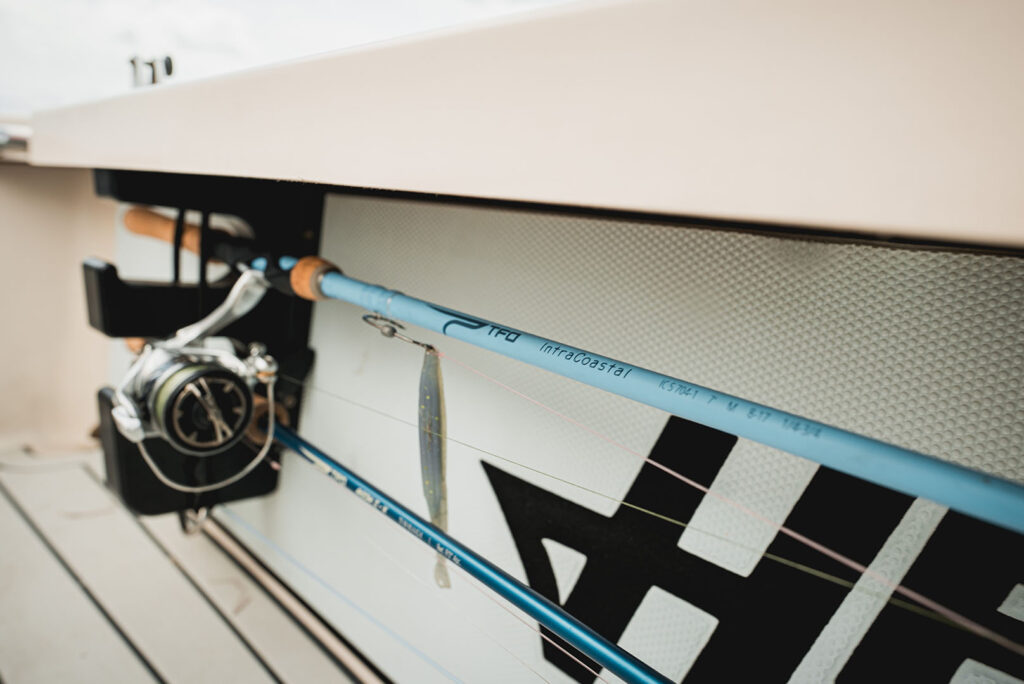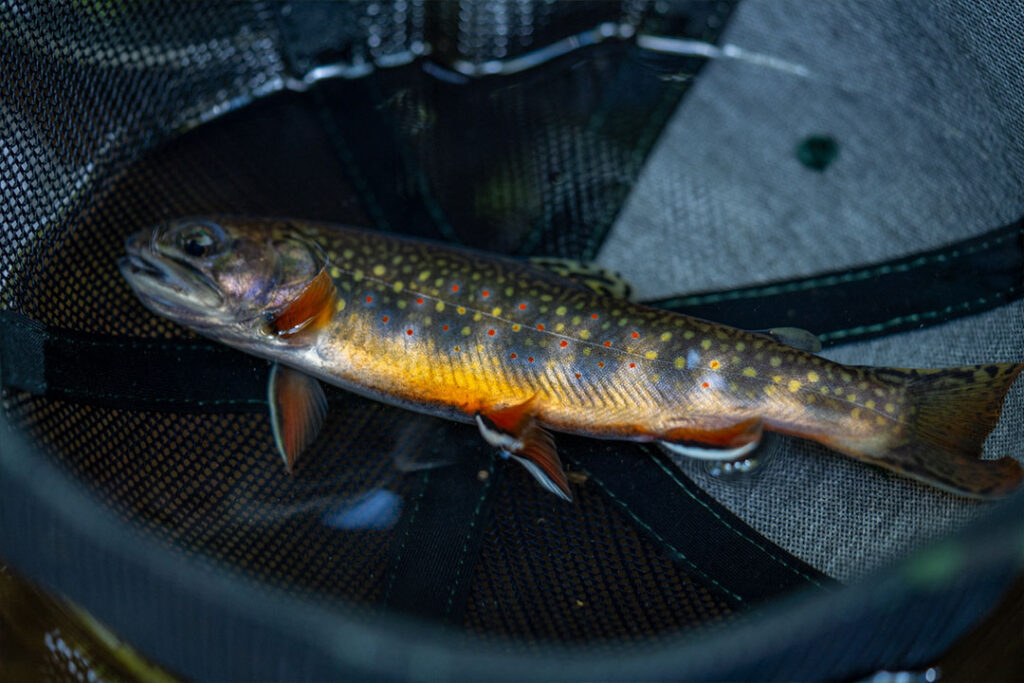I’m going into my 80th year, my 61st year working as a fishing guide, my 28th year of operating the Sailfish School in Guatemala. During these years, I’ve done everything from owning fishing lodges, worked in the industry as a sales rep for both rod and reel companies, owned a fishing reel manufacturing company, and owned one of the early fly shop/tackle shops in the Florida Keys for many years.
When we had our shop in the Keys from the early-mid 1970s, we used to offer destination fishing. Part of my deal was to do research and look for different places to send fly fisherman. During this time, I was traveling a lot on my own – places like Venezuela for blue marlin and sailfish in the Pacific. The more I traveled, the more I learned about targeting big game species offshore.
In the early eighties, I took a job rebuilding an old fishing lodge in Costa Rica and ended up staying there for six months. I took all my tarpon fishing equipment, and every day I had a chance to fish in the afternoon after the day’s work was done. We’d take off and fish until dark. I think I fished 91 days. I hooked 119 billfish on fly and caught 11 of them during this stay. I realized that my tarpon rods, reels, lines, knots etc. – were not what you need to be using to seriously target billfish on the fly.
The Sailfish School
I’m going into my 30th year of operating the Sailfish School. Founded in 1992, this was a traveling school where I took people fishing with me and they caught sailfish on the fly. Originally, I started the school n Panama and Costa Rica, but eventually moved it to Guatemala in 1994 and it officially became the Sailfish School.
We catch about 90% of the bites we have on fly, and it’s gotten to the point where in the last 15 years, I’ve never taken anyone down there that didn’t catch a sailfish on the fly.
Targeting Sailfish – The Equipment, Setup & Prep
Let’s start off with discussing the equipment we use for targeting sailfish. Starting with the fly, we mainly use a floating fly with a popper on it, from there the fly is attached to a 12″ piece of 100lb bite tippet which is attached to over 15″ of 20lb class tippet using a huffnagle knot. The fly line is usually a 550-grain head with 80 feet of 50lb monofilament running line, and about 700 yards of 65lb gel spun backing. I’ll have that on a 5.5” inch in diameter Mako reel on a TFO Heavy Duty Bluewater SG rod.
(To learn more about the Bluewater SG series and the history behind making one of the strongest fly rods every made, click here to read — The Evolution of the TFO Bluewater Series with Jake Jordan.)
Once we have our rod setup good to go, we set the drag on the reel for sailfish at 6lbs and 1lb for marlin. From there, we’ll strip off 25 feet of fly line and get ready. Next, we’ll put out teasers, but instead of pulling lures or baits on either side of the boat, we generally have two mates and a captain and each one of them has a teaser. Depending on whether the angler is right-handed or left-handed, the teasers will be running on the opposite side of the boat to where the angler is casting.
We’ll have a flat line, a rigger line, and then a bridge teaser. Sometimes we’ll run a fourth line. We troll teasers that don’t have any hooks in them, but we usually put bait sewn inside – either a ballyhoo or a strip of bait. When the sailfish or marlin comes up, they grab it and get a little taste of that bait. As soon as the fish rises, the angler heads to the port corner of the vessel, puts the fly in the water, and lets the fly drag behind the boat 25 feet back.
At this point, the guides get all the teaser lines out of the water, except for the one that the fish went after. As the teasers are coming in, the fish will follow them. As the fish comes in, the captain is watching from above. When the fish gets about forty feet back, the captain turns the boat hard to the starboard side and pulls the vessel out of gear so that it is no longer underway (you can’t be underway/moving for a legal sailfish catch).
As the captain pulls if out of gear, he yells from the bridge to cast. The angler picks up the fly, throws a back cast out to the side, and casts across the wake at about a 45-degree angle right to where the teaser is. As the fly is coming forward during the cast, the bait and switch teaser guide yanks the teaser out of the water and flips into the boat, and then the fly lands. The fish, thinking that the fly was the bait that he’s tasted and he’s trying to eat, comes up and circles it once, looks at it as it’s just lying there dead. He thinks he’s stunned it with his bill, and he comes out of the water and eats the fly coming back into the water.

Photo: Jake Jordan
Fish On!
In the case of smaller marlin and the sailfish, when he eats the fly – you never let them eat it until they are in the direction going away from the boat. As the fish swims away, you point the rod straight at them (with the drag still set at 6lbs) and pull like you were pulling with a hand line – just short, 6” jerks. What that does is it puts 6lbs of pressure on the point of a hook and drives it into the jaw of the fish.
The fish immediately jumps, goes crazy and starts to run away from you. What he’s doing is pulling six pounds of drag and wearing himself down. From there, the captain puts the boat in reverse and starts backing up towards the fish as the angler is fighting the fish. As soon as there’s any slack in the line, the anglers stick the rod tip underwater and turns the reel as fast as he can, winding the slack back onto the rod.
If the rod tip is in the water, it keeps tension on the hook and the fish. If you have the rod tip in the air, it puts slack on both end of the line and the hook can fall out. You either have your rod pointed towards the fish or in the water – not raising the rod tip!
After about 5-10 minutes, you’ll start applying pressure and gaining more line on the reel. When you get up to the leader, you’ll back away and the mate grabs the leader. The fish is caught once the leader is wound in through the rod tip. From there the mate grabs the leader while still holding on to the bill of the fish. The angler looks over, gets a picture with the fish, and then lets the fish go.
The only fish that are a bit different from sailfish are the blue, black and big stripe marlin. They are more powerful and much faster – particularly the blue marlin, which is the fastest fish in the ocean. If you try to catch them with the same technique as the sailfish, you’ll break off. I’ve developed a technique that works, and if you want to learn that one, you’ll have to come fishing with me (laughs).
Blog written by TFO Advisor Jake Jordan. You can find out more about Jake’s Sailfish School here.

Photo: Jake Jordan






